The peacock is a medium-sized bird known for its stunning and colorful plumage with stunning patterns. It is believed that these animals originated in Asia. Today, they are also found in some parts of Australia and Africa.
Aside from their extraordinary visuals, how much do we know about these birds?
How long do peacocks live?
A peacock’s lifespan depends on many factors, such as diet and living conditions. Wild peacocks can live for about 20 years, while domesticated peacocks can live for 40 or even 50 years.
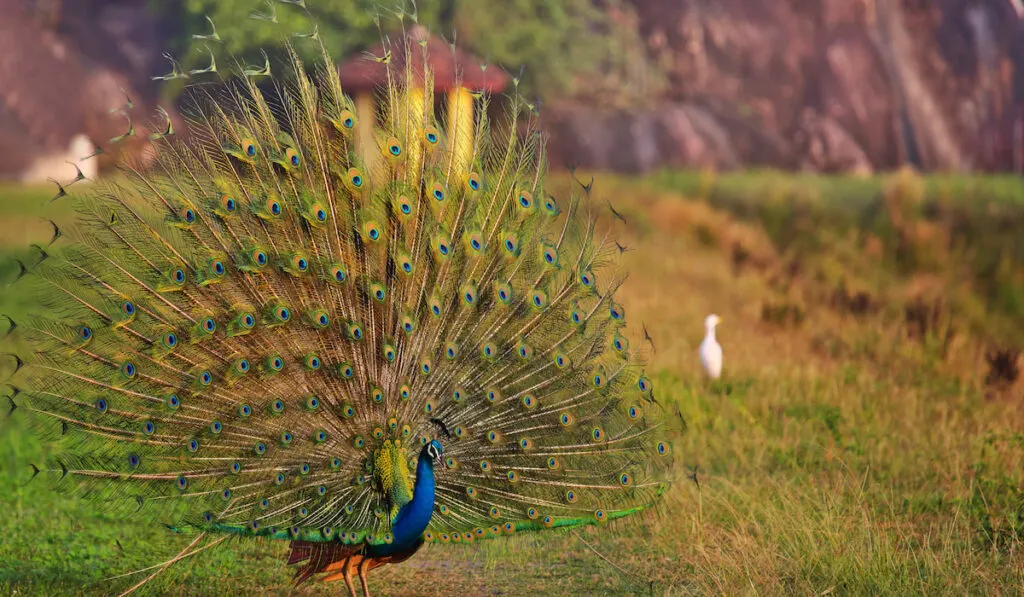
Read on to find out more about peacocks, such as their lifespan in captivity and the wild, the factors that affect their lifespan, and how to determine their age.
Table of Contents
How Long Do Peacocks Live?
Depending on its environment and living situation, the lifespan of a peacock varies.
In Captivity
Peacocks live longer in captivity, mainly because they are protected from predators and because their owners also give them a better and more consistent diet.
On average, peacocks in captive environments live for about 40 to 50 years.
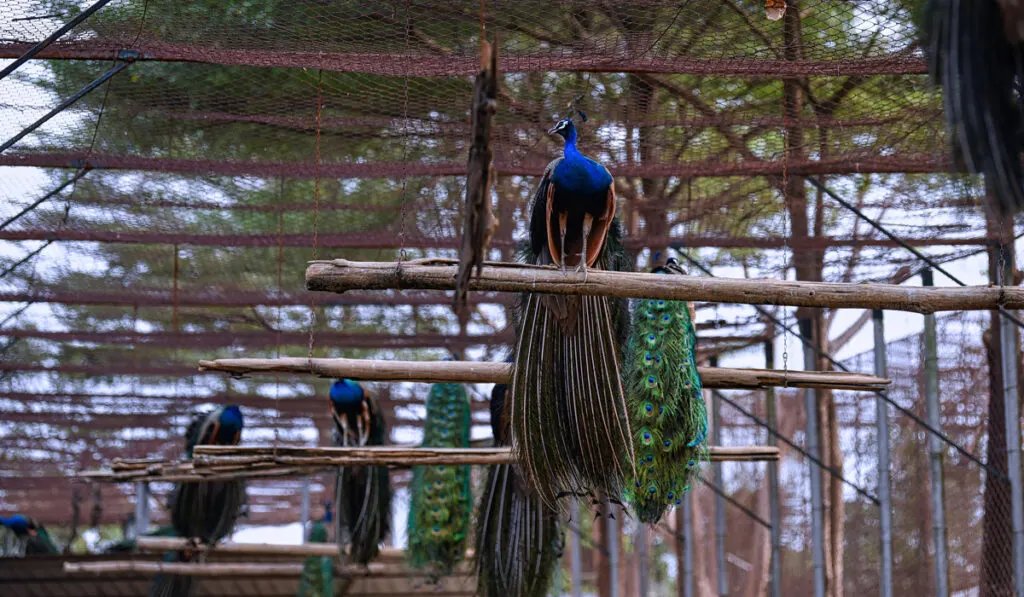
Moreover, peacocks are quite helpful on farms and ranches because they alert other animals if there are predators nearby.
However, because peacocks live for a long time, owners must be committed enough to take care of them.
If for any reason, the peacocks need to be removed along the way, owners must have a solid plan when it comes to re-homing them.
In the Wild
On the other hand, it is hard to tell how long peacocks can live in the wild. But peacocks in the wild can live up to 20 years.
However, this varies significantly due to some factors, including the presence of predators.
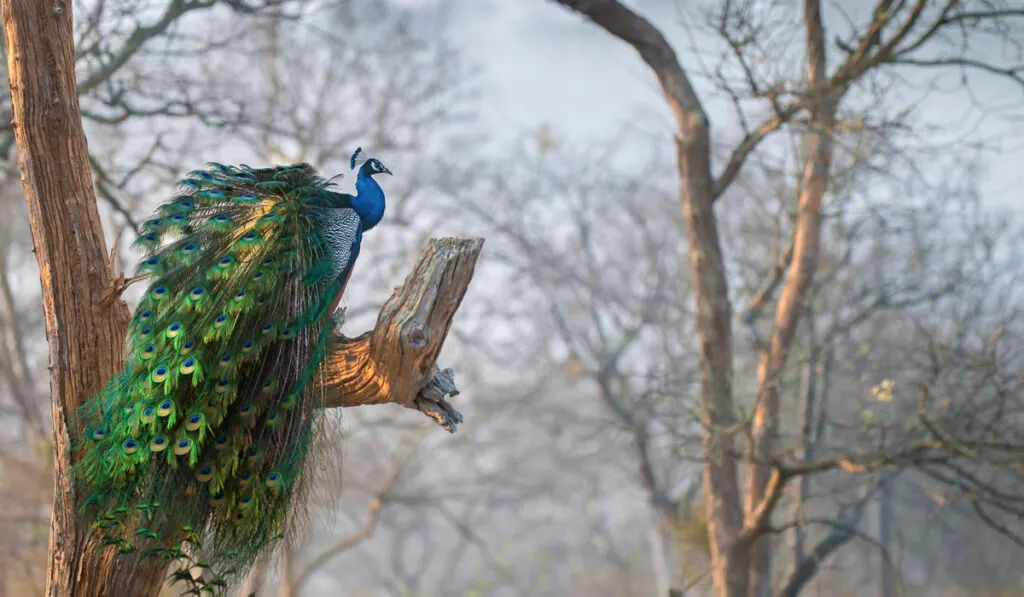
In the wild, peacocks live in groups called “parties.” Because they cannot fly far or run fast to escape predators, peacocks make easy prey to larger wild animals, such as tigers or leopards.
In Comparison to Other Birds
Let’s compare the peacock’s lifespan to other farm animals:
Chickens
Like peacocks, chickens also live longer in captivity.
On average, chickens live for about 10 to 12 years. Meanwhile, they can live in the wild for only 3 to 7 years.
Ducks
Ducks live for up to 20 years in captivity, while in the wild, they have an average lifespan of 5 to 10 years.
Geese
In captivity, geese can live for up to 25 years. On the other hand, they have a lifespan of 20 years in the wild.
Turkeys
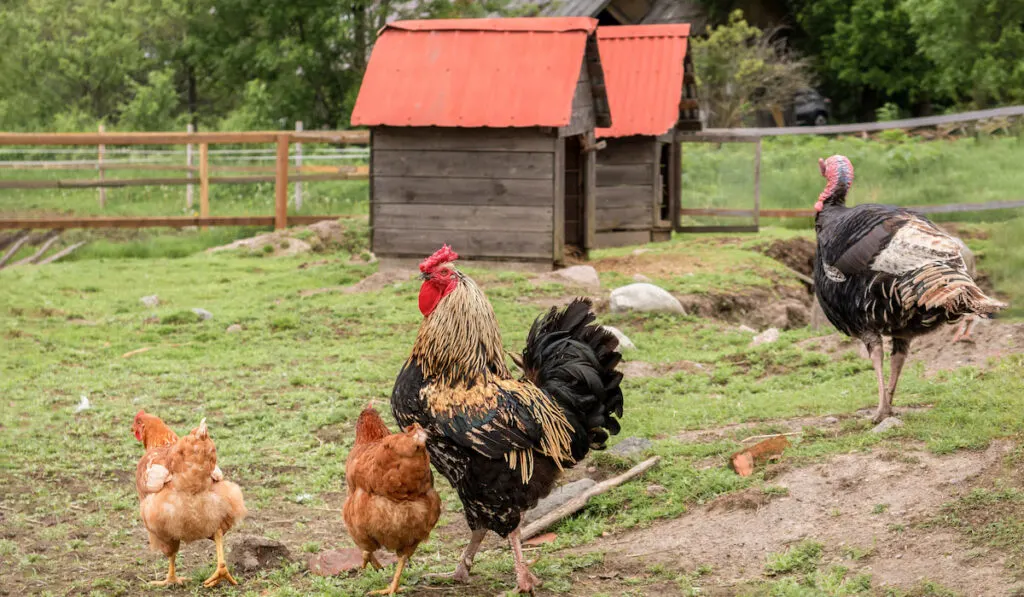
Turkeys have a similar lifespan to chickens. In captivity, they live for around 10 years, while in the wild, they live for only about 3 to 5 years.
With this in mind, it is now clear to you that peacocks live much longer than other fowl, especially when they live in a safe environment.
Factors That May Affect a Peacock’s Lifespan
Below are the factors that may positively or negatively affect a peacock’s lifespan:
1. Environment
Peacocks in the wild tend to live together – usually with 10 or more birds. However, that does not entirely keep them safe from wild predators that will try to attack them.
In captivity, peacocks get along well with other farm animals. In fact, a peacock shouldn’t be kept alone; they will be happiest with other birds.
However, male peacocks tend to be territorial, so keeping them with some peahens is best.
2. Infections
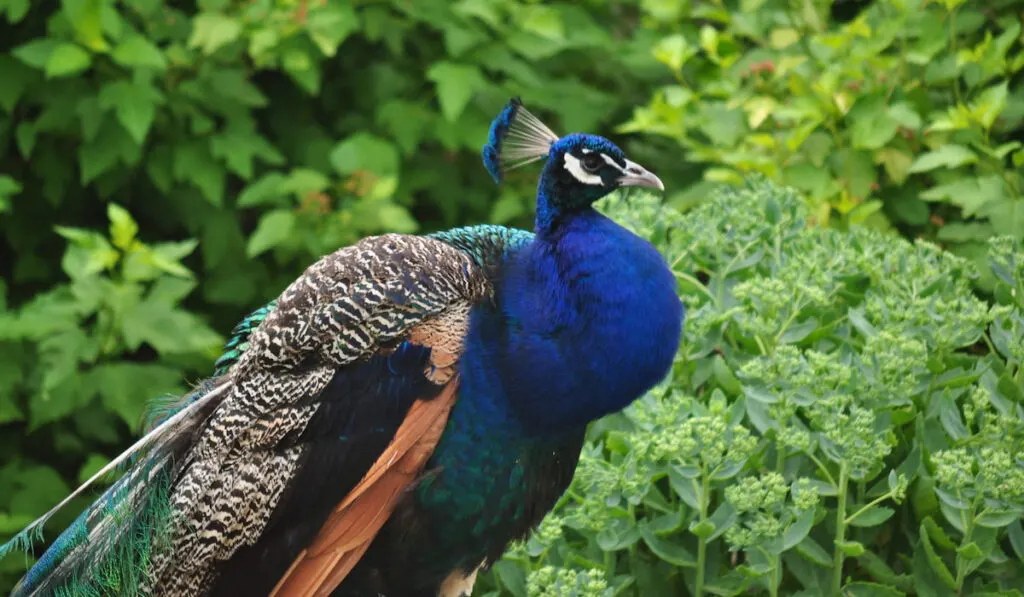
Peacocks living in captivity need regular veterinary care to live a long life.
Deworming and treatment for coccidia are only some of the essential treatments peacocks should receive.
In addition, these birds are also prone to bacterial infections, and they may also get mites and lice in their feathers. Fortunately, a qualified veterinarian can easily treat these issues.
3. Habitat Loss
Aside from having plenty of enemies, peacocks that live in the wild are also experiencing habitat loss.
Peacocks live in trees where they can hide from their predators.
However, since humans are continuously cutting trees and engaging in mining activities, there is less place for peacocks to live, which results in the decline of their population.
4. Nutrition
Peacocks should also receive the proper diet to have a healthy body.
Peacocks are opportunistic omnivores, which means that they will eat almost anything that they find.
However, peacocks mostly thrive on foods packed with protein, like seeds, grains, chicken feed, insects, and worms. They also enjoy berries, figs, and greens.
5. Predation
As previously mentioned, peacocks have a poor capability to defend themselves. They may fly short distances to escape predators, but it is not always enough to free themselves from danger.
Some peacock predators include wild cats, stray dogs, mongooses, raccoons, and tigers.
In addition to these wild predators, humans are also threats to peacocks. Because they are beautiful birds, peacocks are often hunted, smuggled, or poached.
6. Shelter
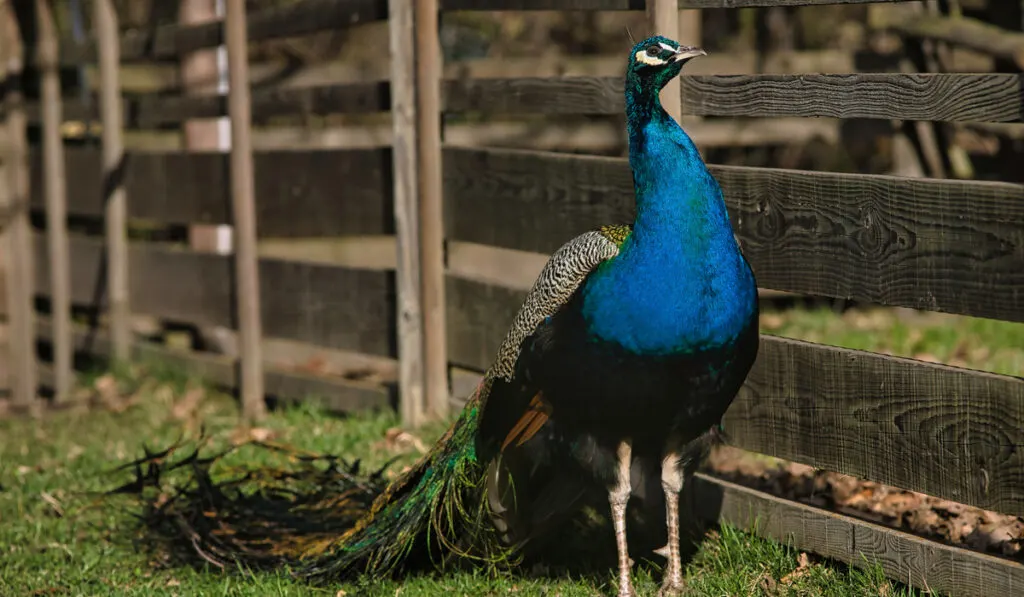
Peacocks in captivity should be given enough space to roam. Enough space means that peacocks won’t get stressed.
However, pens and fencing are essential to protect them from predators.
Peacocks thrive in an open space with proper fencing. They should not be enclosed in a shelter unless during extreme weather conditions where they need extra protection.
How to Know a Peacock’s Age
A peacock’s eye feathers will give you an idea of how old they are.
Below we go into more details that will help you determine a peacock’s age:
0-1 years old
Peacocks aged one year and below are primarily brown in color.
Once they are near to being one year old, their tail feathers will start to lengthen. However, they do not have eye feathers at this point.
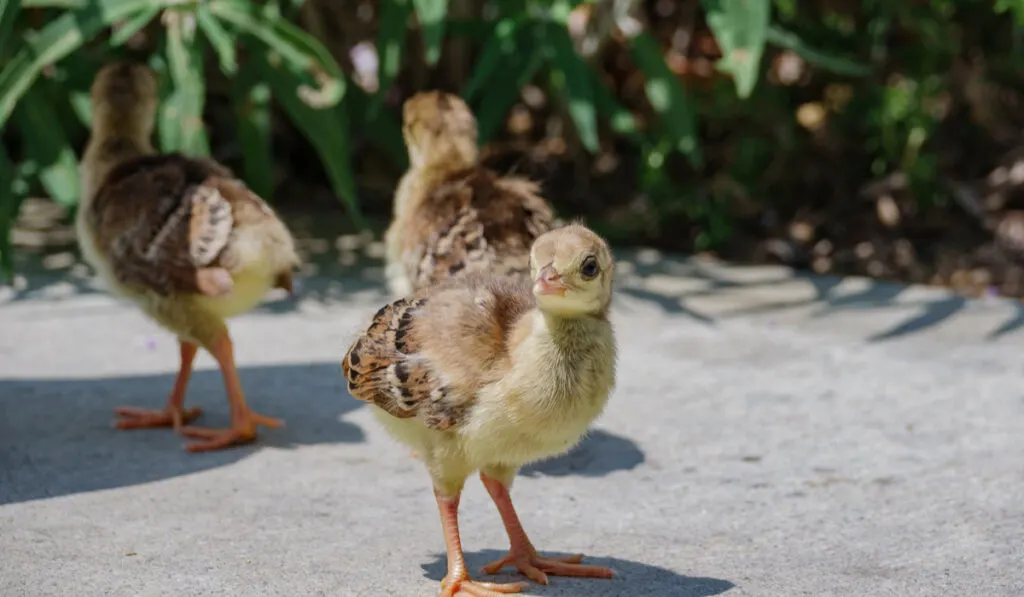
1-2 Years Old
Peacocks aged one to two years old usually have few eye tail feathers already, but they are still underdeveloped and will not be capable of forming a full display yet.
2-3 Years Old
Once they reach 2 to 3 years of age, peacocks will already have their complete set of eye tail feathers.
3 Years Old and Above
During this time, it will already be hard or nearly impossible to tell their age already because they will not show any signs of aging from this point onwards.
Therefore, it is important to tag them or keep a written report of your peacock’s age.
Conclusion
Peacocks live for a long time; this is an important factor that potential owners need to consider before taking one of these birds home.
Moreover, like other domesticated animals, peacocks will also need a proper diet, comfortable shelter, and veterinary care for them to live for a long time.
If you’re a bird enthusiast looking for an exotic type of bird you can keep at your home, then you might consider having a peacock. However, it is always best to check if you are allowed to raise a peacock where you live.
Resources:
- https://petkeen.com/peacock-lifespan-how-long-do-they-live-captivity-wild/
- https://a-z-animals.com/blog/peacock-lifespan-how-long-do-peacocks-live/
- https://northernnester.com/how-long-do-peacocks-live/
- https://www.backyardchickenchatter.com/how-long-do-peacocks-live/
- https://chickenandchicksinfo.com/how-long-do-peacocks-live-in-captivity/
- https://chickenandchicksinfo.com/how-to-tell-the-age-of-a-peacock/
